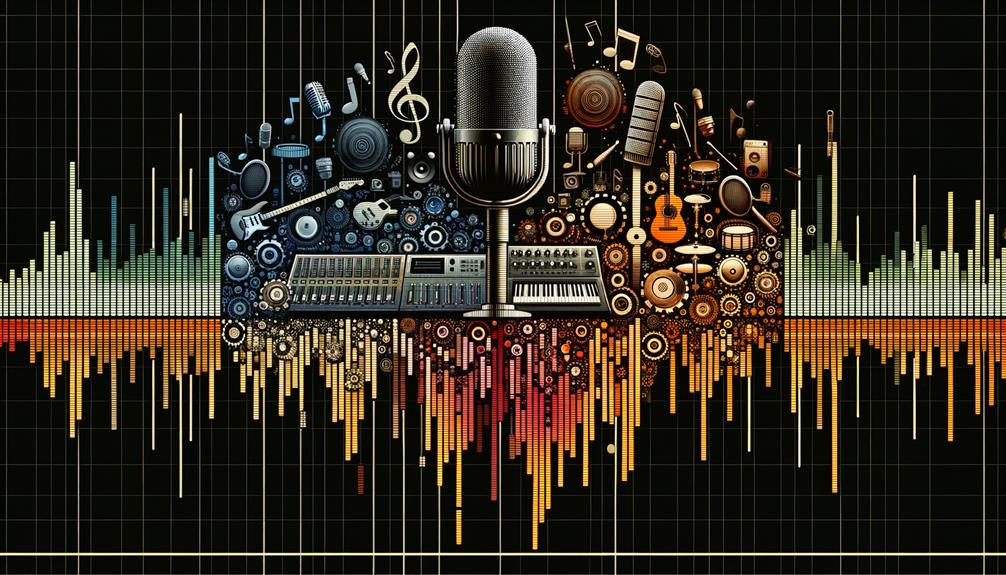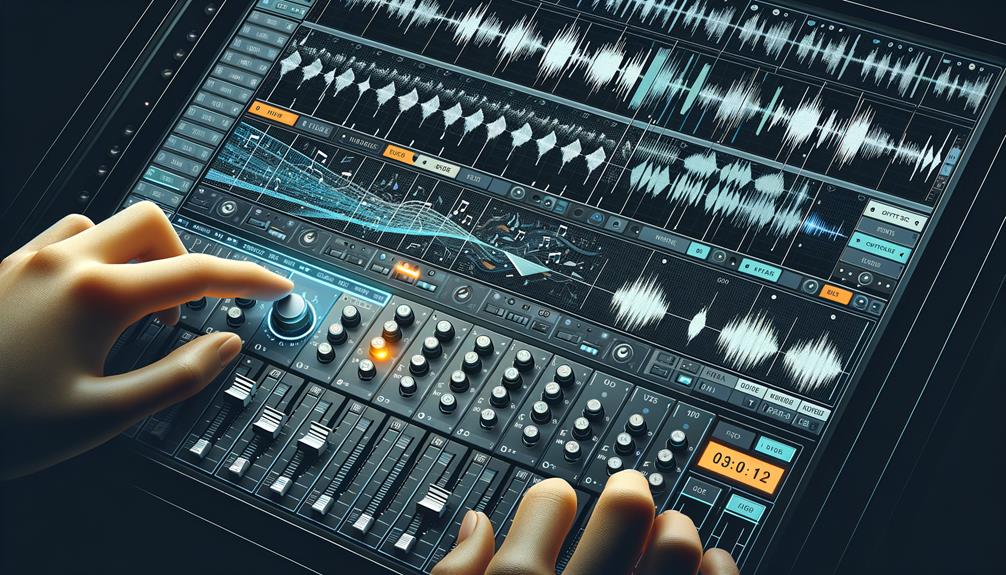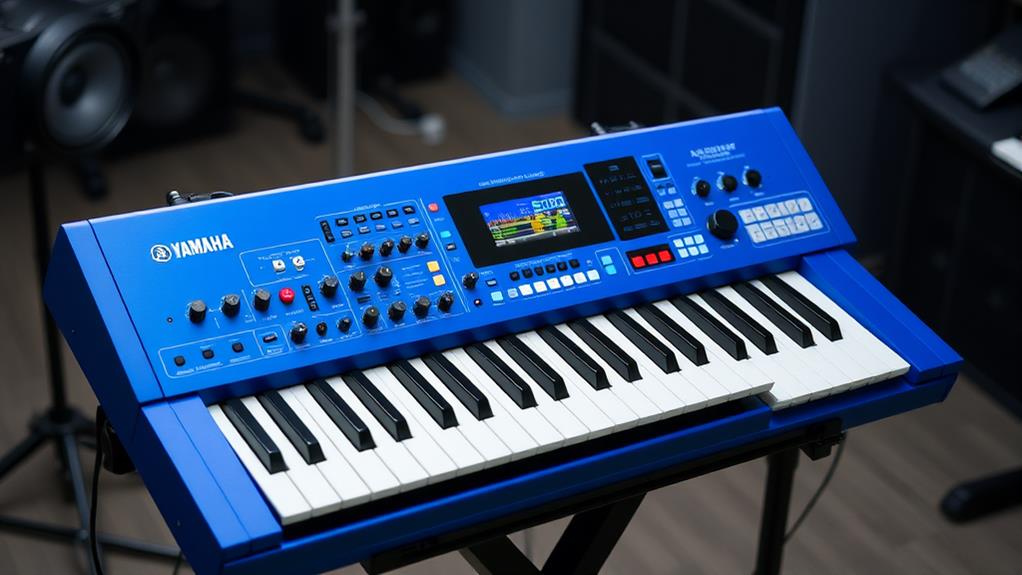In the ever-advancing field of music technology, the introduction of Splitter, an AI-powered tool capable of deconstructing songs into isolated vocals and instrumental tracks, marks a significant milestone.
This innovative software offers a versatile solution for musicians, producers, and audio engineers, enhancing workflows and opening up a new realm of creative possibilities.
By enabling users to refine their music through precise separation techniques, Splitter has the potential to redefine traditional boundaries within the industry.
Its promise extends beyond mere convenience, suggesting a future where the manipulation of audio components is as intuitive as editing text on a screen.
As this technology becomes more integrated into the fabric of music production, it invites professionals and enthusiasts alike to consider its implications on the art of sound engineering and the future of music creation itself.
Key Takeaways
- Splitter is an AI-powered tool that can split a song into vocals, bass, drums, and other instruments.
- It is free and easily accessible for all BandLab users, available as an app on Android and iOS or on a web browser.
- Users can remove vocals from a song using Splitter by importing a song under 15 minutes in length and muting the vocal track.
- Splitter also offers features such as vocal isolation, custom mixes, BPM analysis and tempo changing, key detection, and pitch shifting.
Exploring Splitter’s Capabilities

Splitter’s multifaceted capabilities extend beyond simple track separation, offering musicians and producers an array of tools to refine their craft and customize their audio experience.
Exploring creative applications, Splitter facilitates innovative sound design by isolating components for sampling and layering, thus enhancing music production workflows. Its precision in extracting stems allows for granular manipulation and reimagining of sonic textures.
Producers can leverage this technology to construct custom backing tracks or remixes with unprecedented ease. The platform’s intuitive interface streamlines the process, enabling creators to focus on the artistry rather than the technicalities of deconstruction.
Step-by-Step Vocal Removal
To commence the process of vocal removal from a track using Splitter, one must first navigate to the ‘Create’ tab and locate the tool under the ‘Tools’ section.
The innovative application of Splitter for acapella extraction and mixing is streamlined by the following steps:
- Upload the desired track to the Splitter interface, adhering to the maximum length requirements.
- Select the appropriate separation process, typically a four-stem model for detailed splitting.
- Allow the AI to analyze and process the audio, segregating vocals from instruments.
- Mute or extract the vocal stem, utilizing the flexibility of the software for tailored mixing.
Employing Splitter in this manner offers a meticulous approach, providing creators with pristine instrumentals and vocals for further production pursuits.
Crafting Custom Mixes

Crafting custom mixes with Splitter involves strategically using the Mute and Solo features to blend stems for a tailored auditory experience. This process allows for creating unique arrangements by isolating or combining different elements of a track.
Users can enhance sound design by experimenting with the balance of vocals and instruments, thus achieving a mix that caters to specific creative or technical needs. The ability to manipulate individual components of a song not only fosters an innovative environment for producers but also contributes to the development of new musical styles.
Splitter’s precision in separating stems ensures that the integrity of the original mix is maintained while giving users the freedom to reimagine the sonic landscape.
Utilizing BPM Analysis
Harnessing the capabilities of Splitter’s BPM analysis feature, users can effortlessly ascertain and adjust the tempo of any track for a variety of music practice and production purposes. The precision of BPM (beats per minute) analysis is pivotal in music creation and learning, offering several key advantages:
- Alignment of Remixes: Ensuring seamless synchronization with other tracks.
- Practice Tool: Slowing down for beginners or speeding up for advanced practice.
- Sound Design: Timing effects and transitions perfectly with the beat.
- Live Performance Prep: Aiding artists to rehearse at varied tempos.
Utilizing BPM analysis in conjunction with the advantages of vocal isolation allows for an innovative approach to music manipulation, redefining the creative workflow for producers, DJs, and musicians alike.
Adjusting Track Tempo

Building on the precision offered by Splitter’s BPM analysis, adjusting the track tempo becomes a straightforward process for musicians and producers looking to tailor the speed of a song for various creative and practice purposes.
With this tool, using tempo manipulation for creative remixing is no longer a daunting task. It enables seamless integration of tracks into new sonic contexts, fostering innovation in remix culture.
Furthermore, utilizing pitch shifting for mashup production, artists can merge disparate songs into a cohesive blend, adjusting tempo without compromising pitch, or vice versa.
Such capabilities empower artists to experiment with the temporal dynamics of music, ensuring their creations resonate with both novelty and familiarity, thus driving the evolution of modern music production.
Detecting Song Keys
Identifying the key of a song is an essential step in music theory and composition, which Splitter simplifies through its integrated key detection feature. This functionality enriches the user experience by offering:
- Precision in song key identification, enabling musicians and producers to understand and work with the harmonic structure of a song efficiently.
- Enhanced ability to modulate and transpose tracks, facilitating seamless integration into various musical projects.
- Insight into the tonal center, which aids in the creation of complementary arrangements and melodies.
- The benefits of knowing song keys, which include improved musical analysis and the potential for innovative remixes and covers.
Shifting Pitch for Practice

Moving beyond the realm of key detection, Splitter’s pitch shifting feature offers musicians the flexibility to adjust the song’s pitch to suit their practice needs.
This functionality is not only pivotal for accommodating changing vocal ranges but also for honing improvisation techniques. By transposing the pitch, vocalists can practice comfortably within their natural range, thus avoiding strain.
Instrumentalists benefit too, as they can alter the pitch to match the tuning of their instruments or to explore different tonalities. The analytical precision of Splitter’s pitch shifting ensures that the transposed audio maintains its quality, allowing for a seamless integration into practice sessions.
This innovative tool streamlines the workflow for musicians, fostering an environment conducive to skill development and creative exploration.
Frequently Asked Questions
How Does Splitter’s AI MAIntAIn Audio Quality When Splitting Tracks?**
Splitter’s AI ensures audio fidelity through advanced separation algorithms that meticulously isolate vocal and instrumental tracks, preserving the integrity and quality of the original recording for innovative and high-fidelity sound manipulation.
This Question Seeks Information About the Technical Aspects of How Splitter’s AI Manages to Keep the Integrity of the Audio While Dissecting Complex Layers of Music Into Individual Components.
The technical prowess of Splitter’s AI lies in advanced separation algorithms ensuring audio fidelity while deconstructing music into discrete components, reflecting a commitment to innovation in digital sound processing for creators.
Are There Any Limitations on the Genres or Types of Music That Splitter Can Effectively Process?**
Splitter’s genre adaptability is robust, efficiently processing diverse music types but may encounter limitations with highly complex polyphonic compositions, which could affect performance benchmarking standards in AI-driven audio separation technology.
This Question Inquires Whether Splitter Is Equally Proficient Across All Music Genres, Such as Classical, Rock, Electronic, Etc., and if There Are Any Specific Challenges With Certain Types of Music.
Splitter’s proficiency across diverse music genres relies on genre-specific algorithms; however, intricate arrangements in genres like classical may pose challenges due to the complexity and similarity of instrumental frequencies.
What Measures Does Splitter Take to Ensure Copyright Compliance When Users Are Exporting and Using the Separated Tracks?**
Splitter incorporates usage guidelines and copyright education to ensure users respect intellectual property laws when exporting and utilizing separated tracks, promoting both innovation and legal compliance in the creative process.
Conclusion
In summary, Splitter represents a significant advancement in audio processing technology, providing a suite of tools for isolating song components with precision.
Its integration into BandLab democratizes access to high-level music production features, facilitating vocal removal, custom mix creation, beat analysis, tempo adjustment, key detection, and pitch shifting.
This AI-powered innovation promises to enhance creative possibilities and technical exploration within the music industry, marking a pivotal shift in the landscape of digital audio manipulation.




